NAT 14.5%
Incumbent MP
Peter Crisp, since 2006.
Geography
Northwestern Victoria. Mildura covers the town of Mildura itself as well as a much larger area, including parts of the New South Wales and South Australian borders. It also covers the towns of Hopetoun, Ouyen, Red Cliffs, Robinvale and Wycheproof. The seat covers the entirety of the Rural City of Mildura, the northern half of Yarriambiack Shire, most of Buloke Shire and western parts of the Rural City of Swan Hill (without including the town of Swan Hill itself).
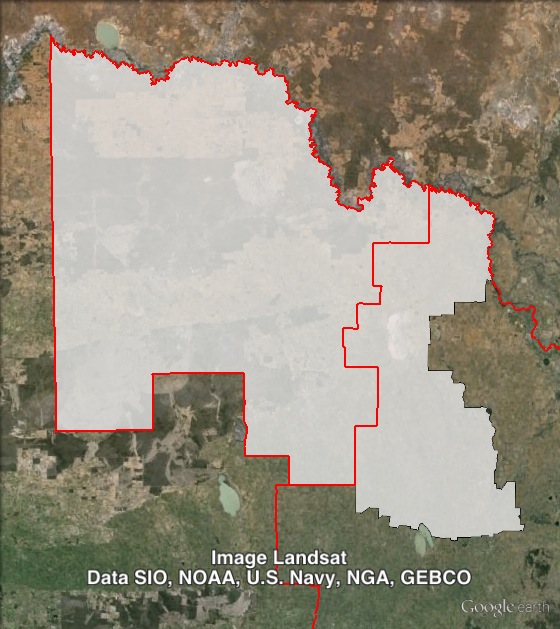
Redistribution
Mildura kept all of its existing territory and expanded east to take in parts of the abolished seat of Swan Hill, including Birchip and Wycheproof. These changes increased the Nationals’ margin from 12.8% to 14.5%.
History
Mildura has existed as an electoral district in the Victorian Legislative Assembly since 1927, and in that time it has been dominated by the Country/National Party, although there have been periods where that party has lost the seat, including the 18 years prior to the last election.
The seat was first won in 1927 by Albert Allnutt. He served as a Country Party member from 1930 until 1945, when he was expelled, and shortly afterwards lost his seat.
He was succeeded by the ALP’s Louis Garlick, who held the seat for one term from 1945 to 1947. He was defeated in 1947 by the Country Party’s Nathaniel Barclay.
Barclay held the seat for two terms, losing in 1952 to the ALP’s Alan Lind. He won the seat back in 1955, and held it until his death in 1962.
Lind was succeeded by the Country Party’s Milton Whiting, who won the seat at a 1962 by-election and served in the seat until his retirement in 1988.
At the 1988 election, Liberal candidate Craig Bildstien managed to win the seat with Labor preferences, putting an end to the National Party’s local domination.
Bildstien was re-elected in 1992, but in 1996 he was defeated by independent Russell Savage.
Savage was re-elected with a large margin in 1999, following which he agreed to support a state Labor government in minority. He was again safely re-elected in 2002, but in 2006 he lost his seat to the Nationals’ Peter Crisp.
Peter Crisp was re-elected in 2010.
Candidates
- Carl Carter (Rise Up Australia)
- Danny Lee (Country Alliance)
- Jo Clutterbuck (Independent)
- Mark Cory (Independent)
- Judith Fenn (Family First)
- Ali Cupper (Independent)
- Morgana Russell (Greens)
- Peter Crisp (Nationals)
- Shane Roberts (Labor)
Assessment
Mildura is a safe Nationals seat.
2010 election result
| Candidate | Party | Votes | % | Swing | Redist |
| Peter Crisp | Nationals | 15,170 | 46.66 | +6.43 | 49.51 |
| Glenn Milne | Independent | 5,209 | 16.02 | +16.02 | 14.65 |
| Ali Cupper | Labor | 4,943 | 15.20 | +8.54 | 15.10 |
| Doug Tonge | Independent | 4,696 | 14.44 | +14.44 | 13.21 |
| Christopher Gray | Family First | 999 | 3.07 | -0.51 | 3.05 |
| Gavin Rees | Greens | 563 | 1.73 | -0.40 | 1.86 |
| Ross Douglass | Democratic Labor | 475 | 1.46 | +1.46 | 1.34 |
| Anthony Connell | Independent | 457 | 1.41 | +1.41 | 1.29 |
2010 two-party-preferred result
| Candidate | Party | Votes | % | Swing | Redist |
| Peter Crisp | Nationals | 19,310 | 59.19 | 59.00 | |
| Glenn Milne | Independent | 13,312 | 40.81 | 41.00 |
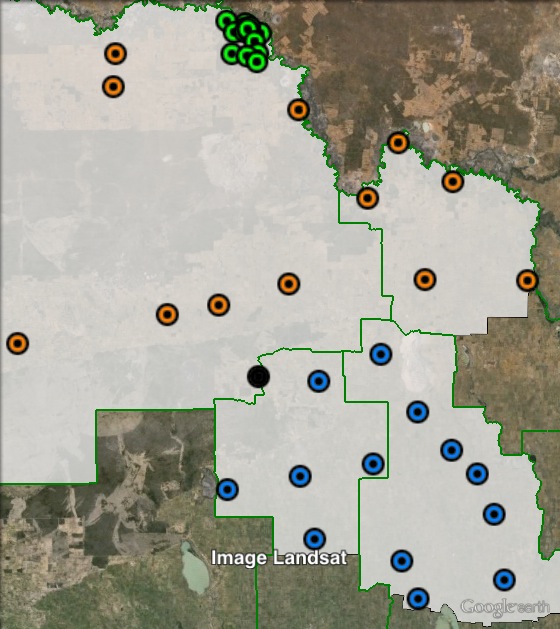
Booth breakdown
Booths in Mildura have been divided into three parts. A majority of ordinary votes were cast in a cluster of 14 booths around the Mildura urban area. The remainder of the electorate has been split into “Central” and “South”. The “South” area includes those polling places in Buloke and Yarriambiack council areas, while the “Central” area includes those polling places in Swan Hill council area and non-urban parts of the Mildura council area.
The Nationals primary vote ranged from 42.2% in Mildura to 77.6% in the south.
The Labor primary vote ranged from 9.3% in the centre to 16.2% in Mildura.
The primary vote for independent candidate Glenn Milne ranged from 6.2% in the south to 17.2% in the Mildura area, although this excludes some booths which were not part of Mildura in 2010.
Another independent, Doug Tonge, had a vote ranging from 3.4% in the south to 16.8% in Mildura, again excluding booths newly added to Mildura.
The following table shows the primary vote for the Nationals and Labor candidates, and independent candidates Glenn Milne and Doug Tonge. Milne and Tonge’s vote percentage in Central and South excludes those booths where they were not candidates.
| Voter group | Tonge % | ALP % | Milne % | NAT % | Total | % of votes |
| Mildura | 16.75 | 16.18 | 17.23 | 42.18 | 16,680 | 46.91 |
| Central | 6.20 | 9.32 | 9.88 | 69.25 | 3,379 | 9.50 |
| South | 3.36 | 13.07 | 6.23 | 77.57 | 2,916 | 8.20 |
| Other votes | 14.16 | 15.70 | 16.66 | 47.41 | 12,583 | 35.39 |
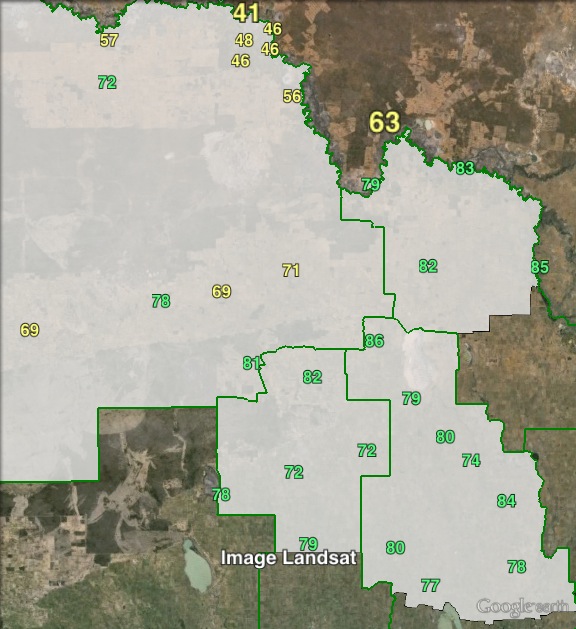
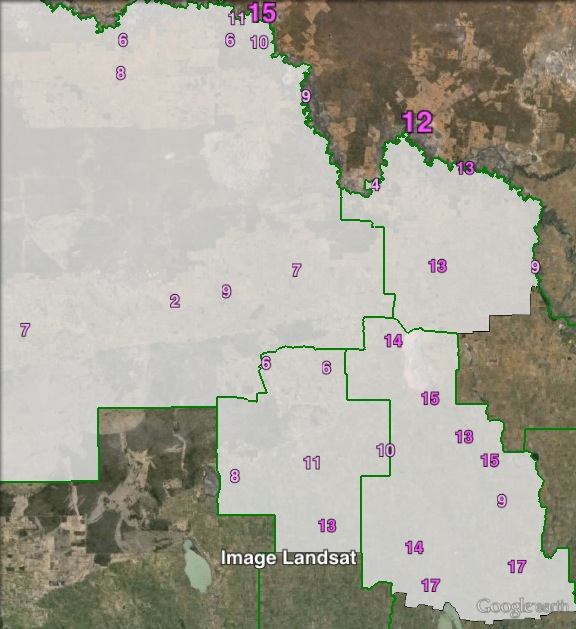
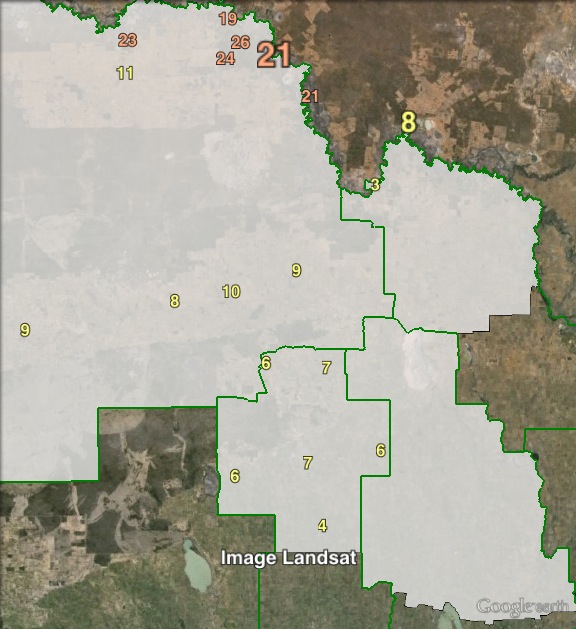
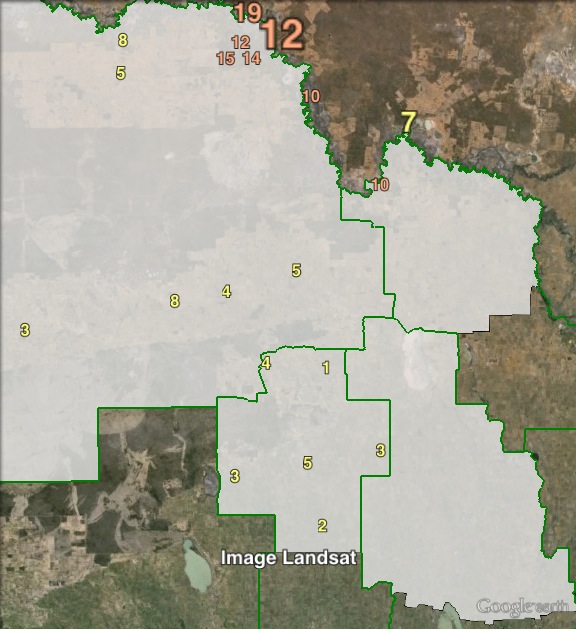
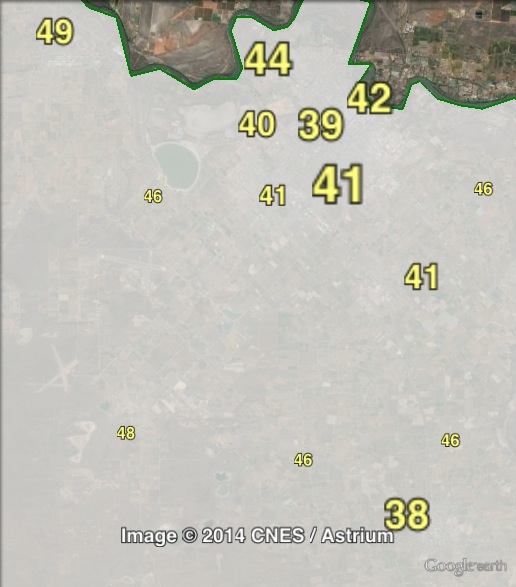
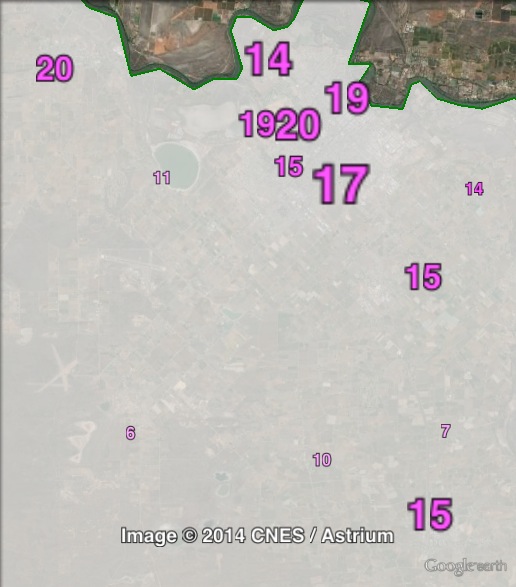
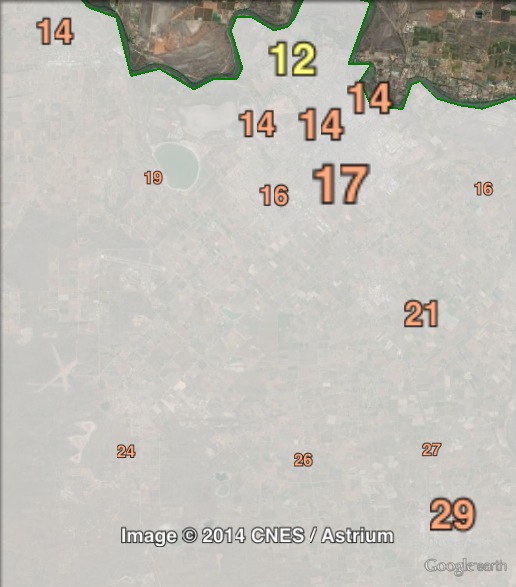
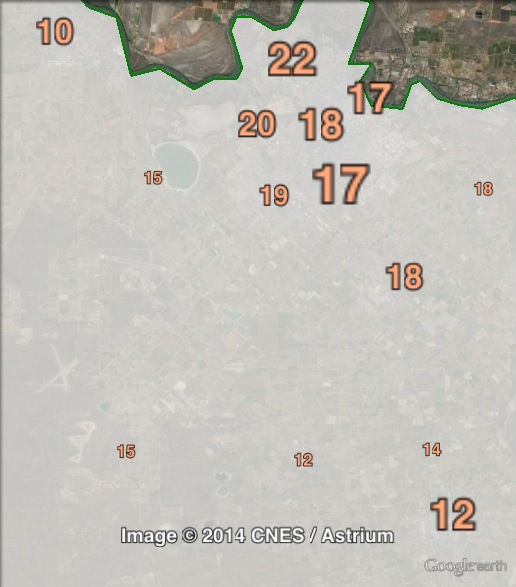


It’s probably worth including figures for Doug Tonge, too. He did about as well as Milne (the mayor of Mildura) or Labor, and from memory he did better in different areas than Milne.
Federal figures suggest this should be a Liberal seat, how much of vote for Independents is disguised Liberal vote?
Thanks for that, I had actually made maps for Doug Tonge, so I’ve added him. I hadn’t noticed how close he was to Milne and the Labor candidate.
Geoff: it’s a possibility, considering how the Lib vote withered when Russell Savage was MP (about 10% in 2002 and 2006). Both the Libs and Mildura-based independents are going to do better in Mildura compared to the Nat-friendly smaller towns, so it’s hard to say. The amount of elections with no Nat or Lib candidate makes it even trickier.
Ali Cupper (the 2010 ALP candidate) is apparently running as an independent with the backing of Savage. She could be worth keeping an eye on. There’s a few other seats mentioned in this article, particularly Morwell.
http://www.theage.com.au/victoria/victorian-independents-gear-up-for-state-election-20140620-zsgno.html
The liberals ran at the last Federal election and the nationals majority increased if I remember correctly. The change up here is more towards progressive politics, with a progressive independent being the one to watch. Peter Crisp has needed preferences to win every time – however the independents and minors have failed to make strategic preference deals which may work in Crisps favour. Ali Cupper may well give the LNP a fright…fingers crossed, safe seats tend to be treated as irrelevant seats.
@ Geoff Robinson, there is a great deal of hostility directed at the Liberal party up here. My opinion is based largely on anecdotal evidence, but people are quite venomous in their opinion of the Liberal party in my experience and they do generally poll badly when they get a chance to contest. Chris Crewther, the federal candidate at last election, has been the subject of quite lot of hostility.
There is some seriously one-sided territory in the North-West…
Danny Lee is representing Australian Country Alliance (ACA), CA is a federally registered party only.
No, the Country Alliance is registered for Victorian state elections.
I found the basis for Darren’s comment.
“In 2014 the Victorian Executive of Katter’s Australian Party voted to merge with Country Alliance to form ‘Australian Country Alliance’ with broader policies that stand for all Victorians without forgetting it’s rural and regional roots.”
Eh whatever but I think in most people’s minds it’s the same party.
Yeah that’s not my problem – I’m going to use the shortened name anyway.
So would I
Stevo, Libs outpolled Nats in Mildura booths at federal election, maybe hostility you mention is like Labor v Greens in inner city?
Stevo, I’m just looked up the AEC figures and the Liberal vs National two-party preferred vote was about 56% (National) to about 44% (Liberal) in Mallee last federal, so National majority actually greatly decreased from about 73% two-party preferred previously. Also the figures show that the Liberals outpolled the Nationals at all the booths in Stawell and Mildura as well as the hospital booths for some reason! The Nationals won in Horsham, Swan Hill and nearly every smaller town. Cheers, John
True, I guess it just seems that way due to aggressive behaviour from Nats supporters – All anecdotal though, my own experiences. Guess we’ll see soon. I’ve also heard lots of vitriol directed at Ali Cupper, but she seems popular.